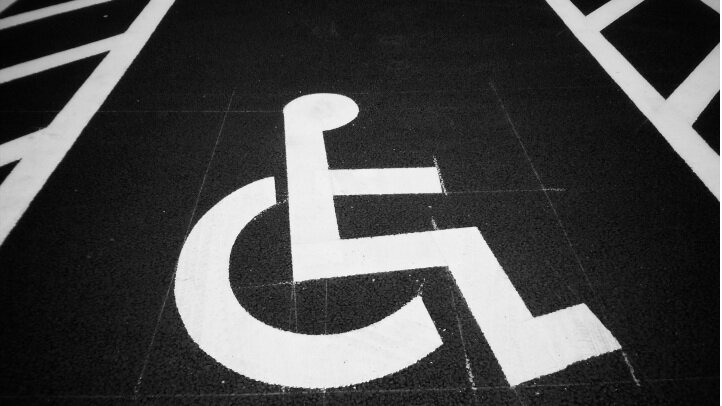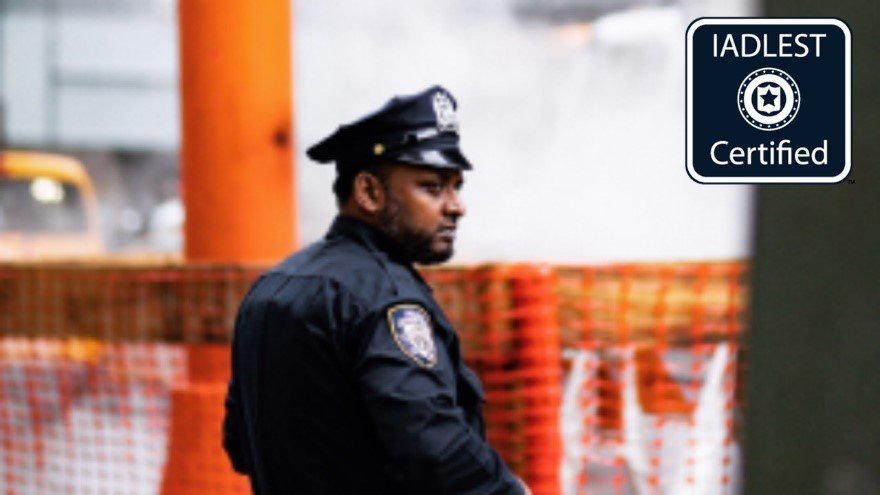Police Response to Persons with Mental Illness
An estimated 21% of U.S. adults experience mental illness. Of those people, about 50% have more than one mental illness. Further, about 20% of adults in the U.S. take psychiatric medication. People with mental illness (PMI) are more likely to have contact with the police, and approximately 25% of PMI have been arrested. Thus, it is not surprising that an estimated 20% of police calls deal with PMI.
PMI also experience police use of force and police-related fatalities at disproportionate rates. A 2017 study estimated that PMI comprise 20% of those injured during police interactions, and their risk of experiencing police use of force is more than 11 times higher than people without mental illness. Per the Washington Post, nearly 25% of people shot and killed by police since 2015 had a known mental health condition.
Misconceptions about PMI
There is a common misconception that PMI are more dangerous than the rest of the population. This is not necessarily true. Despite this, vast numbers of encounters with PMI turn deadly, illustrating the need to enhance police response to persons with mental illness. An officer who is not trained in mental illness might interpret mental health symptoms as defiant or threatening behaviors. In this case, an officer might unintentionally escalate a mental health crisis.
There is often significant variation in the quantity and quality of training for police response to persons with mental illness, with most officers only receiving a short lecture on this topic during the police academy. As a result, many officers are not prepared to handle mental health crises. Further, officers do not know what mental health services are available, and thus are unable to refer people to services that they need.
Police can reduce the number of mental health calls that turn deadly by relying less on defensive tactics when they encounter PMI. For example, active threat assessment, de-escalation, and crisis intervention tactics can be used to resolve situations without using force.
In this article, we will discuss police response to persons with mental illness that are designed to make encounters with PMI less dangerous. We will also introduce you to active threat assessment, which can help police accurately identify and appropriately react to threats in these types of encounters.
This topic is highly related to de-escalation techniques, feel free to check out “Before Defensive Tactics: 5 Training Approaches for LE-Citizen Encounters” for more information on this topic. For more general information on police and PMI, check out the International Association of Chiefs of Police (IACP)’s resources page.
Police-Mental Health Collaborations
One police response to persons with mental illness involves leveraging partnerships to enhance their response to PMI. Typically, the partners are mental health professionals who provide specialized assistance to law enforcement during mental health calls, and they can also serve as a future resource for PMI. We have more information about these collaborations in a companion post, “Before Defensive Tactics: 5 Training Approaches for LE-Citizen Encounters.”
Mobile crisis teams consist of health professionals (e.g., paramedics, mental health clinicians) who have special training on trauma-informed de-escalation tactics. They are often the first to respond, providing on-site assistance to people in crisis, but they can request assistance from law enforcement as needed.
In co-responder programs, specially-trained law enforcement officers respond to most mental health calls, but they can request assistance from a mental health response team. Support can be provided remotely or on-site.
Research reviews from 2018 and 2020 as well as subsequent research have suggested positive effects regarding the impacts on mental health calls, including reductions in the following: use of force, detentions, arrests, and police time spent on calls.
The structure of these types of programs can vary widely, which can impact their effectiveness. For example, one 2018 study that face-to-face collaborations reduced detentions and arrests whereas the remote assistance model did not.
For more information on collaborative police response to persons with mental illness, see:
● The IACP’s Best Practice Guide for Co-Responder Programs
● Council of State Governments’ Law Enforcement-Mental Health Collaboration Support Center
● Bureau of Justice Assistance’s Police-Mental Health Collaboration Toolkit
● SAMHSA’s National Guidelines for Behavioral Health Crises Care
Police-Specific Responses to PMI
Police are still the primary resource for PMI in many communities, particularly in areas with fewer resources. Even when other resources for PMI do exist, the role of police is still critical to ensure safety when it comes to handling mental health calls. Thus, it is still important that officers receive some form of training that teaches them how to work with PMI.
Crisis Intervention Teams (CIT)
One widely-used police response to persons with mental illness is through Crisis Intervention Teams (CIT). CIT teaches officers crisis recognition and communication skills that they can use in scenarios with PMI. Because PMI might react to police encounters differently than other people, these techniques are specialized to deal with people having mental health or substance abuse crises.
Research shows that CIT can improve officers’ attitudes and knowledge about PMI and enhance their confidence in these interactions. Some research also suggests that CIT reduces arrests of PMI. The research is still somewhat mixed when it comes to use of force outcomes, likely because CIT programs vary in terms of content, rigor, and duration.
For more information on CIT, see:
● National Alliance on Mental Illness CIT Program
● The University of Memphis CIT Program
● CIT International Best Practice Guide
Training on Specific Disabilities
CIT is focused on responding to people who are in acute crisis, but there are also trainings that teach officers more about specific types of mental illness or intellectual or developmental disabilities.
Rigorous evidence on these types of programs is lacking, but anecdotal evidence suggests that they may decrease use of force, increase officer awareness of mental health symptoms, and increase their confidence in working with PMI.
For more information, see:
● VirTra’s Research-Driven Curriculum on Multiple Mental Illnesses
● The Arc’s Disability Awareness for First Responders
De-Escalation Training
The content of de-escalation training programs often overlaps with CIT, particularly in terms of crisis recognition and communication skills. However, comprehensive de-escalation training programs also include training on operational and defensive tactics.
ICAT (Integrating Communications, Assessment, and Tactics) is one popular training that teaches officers critical decision-making skills to help them identify situations where it is safe to ‘tactically pause’ and engage verbally with a suspect. Officers also learn operational tactics that can be used to increase time or distance to slow down encounters.
Studies in 2020 and 2021 showed that ICAT reduced officer uses of force, and a 2019 study found that it increased officer confidence in handling volatile encounters. Other de-escalation training programs utilizing similar skills have also been found to reduce use of force and improve officer confidence.
You can access ICAT resources and request modules here:
· The Police Executive Research Forum’s ICAT Training
Active Threat Assessment
Communication and de-escalation techniques are essential during police response to persons with mental illness, but it can be hard to know when these techniques are appropriate versus when to apply force. For example, a PMI may appear unusual and stand out from the crowd, but this doesn’t necessarily mean they pose an imminent threat. To differentiate between the two, officers should observe changes in behaviors and assess whether other threat indicators are present, and make an informed assessment of whether or not violence may occur and how to handle the situation.
Integration of active threat assessment into police training can teach officers how to differentiate between threatening and non-threatening individuals and situations. This will can help them better handle situations with PMI. Check out our course offerings to learn more about active threat assessment training available now.
-
Abramson, A. (2021). Building mental health into community responses. Retrieved March 2022 from https://www.apa.org/monitor/2021/07/emergency-responses
Bennell, C., Blaskovits, B., Jenkins, B., Semple, T., Khanizadeh, A. J., Brown, A. S., & Jones, N. J. (2020). Promising practices for de-escalation and use-of-force training in the police setting: a narrative review. Policing: An International Journal. Retrieved March 2022 from https://www.emerald.com/insight/content/doi/10.1108/PIJPSM-06-2020-0092/full/html?utm_source=rss&utm_medium=feed&utm_campaign=rss_journalLatest
Blais, E., Landry, M., Elazhary, N., Carrier, S., & Savard, A. M. (2020). Assessing the capability of a co-responding police-mental health program to connect emotionally disturbed people with community resources and decrease police use-of-force. Journal of Experimental Criminology, 1-25. Retrieved March 2022 from https://link.springer.com/article/10.1007/s11292-020-09434-x
Bonner, M., & Johnson, M. S. (2022). Crisis de-escalation: A brief review and variations on a model. Contemporary Southern Psychology, 2(1), 2. Retrieved March 2022 from https://repository.ulm.edu/csp/vol2/iss1/2/
Bureau of Justice Assistance (BJA). (ND). Intellectual and developmental disabilities: 10 facts law enforcement officers need to know. Retrieved March 2022 from https://bja.ojp.gov/sites/g/files/xyckuh186/files/media/document/Intellectual_and_Developmental_Disabilities_10_Facts%2BLaw_Enforcement_Officers_Need_to_Know.pdf
Coleman, T., & Cotton, D. (2014). TEMPO: A contemporary model for police education and training about mental illness. International journal of law and psychiatry, 37(4), 325-333. Retrieved March 2022 from https://www.sciencedirect.com/science/article/pii/S0160252714000132?casa_token=e_RESpayOLMAAAAA:o6UAiLqvkm09DQMkyGSA5krM8SRK8Xyzdv_3Gl_E91CKKTz6z3FvO2vro2hr1xAjex8XHafQ
Compton, M. T., Bakeman, R., Broussard, B., Hankerson-Dyson, D., Husbands, L., Krishan, S., ... & Watson, A. C. (2014). The police-based crisis intervention team (CIT) model: I. Effects on officers’ knowledge, attitudes, and skills. Psychiatric services, 65(4), 517-522. Retrieved March 2022 from https://ps.psychiatryonline.org/doi/full/10.1176/appi.ps.201300107?casa_token=lVqEEwHmCrAAAAAA%3AAqL88KrtGJiZc9lweOT65dA1Rx2jJSH4Pv5wbnjsM0Am8F91hiLOKgkCcJMsQmamtxKYLzXfdw
Compton, M. T., Bakeman, R., Broussard, B., Hankerson-Dyson, D., Husbands, L., Krishan, S., ... & Watson, A. C. (2014). The police-based crisis intervention team (CIT) model: II. Effects on level of force and resolution, referral, and arrest. Psychiatric services, 65(4), 523-529. Retrieved March 2022 from https://ps.psychiatryonline.org/doi/full/10.1176/appi.ps.201300108?casa_token=VzRw0eJpOSkAAAAA%3ABgzmPdzNx9sIFn5nFeuZzxdoHTL_Mqqo066WMRdJ7dF-nHaQVFjRUN9dOZrgyOJDAqHl_8COQw
The Council of State Governments (2021). Developing and implementing your co-responder program. Retrieved March 2022 from https://csgjusticecenter.org/publications/developing-and-implementing-your-co-responder-program/
The Council of State Governments. (2021). How to successfully implement a mobile crisis team. Retrieved March 2022 from https://csgjusticecenter.org/publications/how-to-successfully-implement-a-mobile-crisis-team/
Crisis Intervention Training (CIT) International. (ND). “CIT Best Practice Guide.” Retrieved March 2022 from https://www.citinternational.org/bestpracticeguide/
Engel, R. S., Corsaro, N., Isaza, G. T., & McManus, H. D. (2020). Examining the impact of Integrating Communications, Assessment, and Tactics (ICAT) de-escalation training for the Louisville Metro Police Department: Initial findings. Washington, DC: IACP & UC Center for Police Research and Policy. Retrieved March 2022 from https://www.theiacp.org/sites/default/files/Research%20Center/LMPD_ICAT%20Evaluation%20Initial%20Findings%20Report_FINAL%2009212020.pdf
Engel, R. S., McManus, H. D., & Herold, T. D. (2020). Does de‐escalation training work? A systematic review and call for evidence in police use‐of‐force reform. Criminology & Public Policy, 19(3), 721-759. Retrieved March 2022 from https://prohic.nl/wp-content/uploads/2020/11/2020-08-20-PoliceDeescalationPoliceForceMeta.August2020.pdf
Goh, L. S. (2021). Did de‐escalation successfully reduce serious use of force in Camden County, New Jersey? A synthetic control analysis of force outcomes. Criminology & Public Policy, 20(2), 207-241. Retrieved March 2022 from https://onlinelibrary.wiley.com/doi/10.1111/1745-9133.12536
Hacker, R. L., & Horan, J. J. (2019). Policing people with mental illness: experimental evaluation of online training to de-escalate mental health crises. Journal of experimental criminology, 15(4), 551-567. Retrieved March 2022 from https://link.springer.com/article/10.1007/s11292-019-09380-3
Hallett, N., Duxbury, J., McKee, T., Harrison, N., Haines, A., Craig, E., & O'Brien, A. J. (2021). Taser use on individuals experiencing mental distress: An integrative literature review. Journal of psychiatric and mental health nursing, 28(1), 56-71. Retrieved March 2022 from https://onlinelibrary.wiley.com/doi/abs/10.1111/jpm.12594?casa_token=n2H4Db9Rm-gAAAAA:-bh-rHtmECuW_88ErVeJy1x9DSMMmCgsaE-0AB9yQPwbNhnp7cM4EkmRPdnvSvedbt72NxuR9iLvcQ
Hassell, K. D. (2020). The impact of crisis intervention team training for police. International Journal of Police Science & Management, 22(2), 159-170. Retrieved March 2022 from https://journals.sagepub.com/doi/abs/10.1177/1461355720909404
Heslin, M., Callaghan, L., Packwood, M., Badu, V., & Byford, S. (2016). Decision analytic model exploring the cost and cost-offset implications of street triage. BMJ open, 6(2), e009670. Retrieved March 2022 from https://bmjopen.bmj.com/content/6/2/e009670.short
International Association of Chiefs of Police (IACP), & University of Cincinnati (UC) Center for Police Research Policy. (2017). Assessing the impact of co-responder team programs: A review of research. Washington, DC: IACP. Retrieved March 2022 from https://www.theiacp.org/sites/default/files/IDD/Review%20of%20Co-Responder%20Team%20Evaluations.pdf
Isaza, G. T., McManus, H. D., Engel, R. S., & Corsaro, N. (2019). Assessing the impact of Integrating Communications, Assessment, and Tactics (ICAT) training program for the University of Cincinnati, OH Police Division (UCPD). Washington, DC: IACP & UC Center for Police Research and Policy. Retrieved March 2022 from https://www.theiacp.org/sites/default/files/Research%20Center/UCPD_ICAT%20Evaluation_Final.pdf
Jenkins, O., Dye, S., Obeng-Asare, F., Nguyen, N., & Wright, N. (2017). Police liaison and section 136: Comparison of two different approaches. BJPsych bulletin, 41(2), 76-82. Retrieved March 2022 from https://www.cambridge.org/core/journals/bjpsych-bulletin/article/police-liaison-and-section-136-comparison-of-two-different-approaches/8A5B71FE2D313AC06B4659E03BB51BD8
Krider, A., & Huerter, R. (2020). Responding to individuals in behavioral health crisis via co-responder models. Retrieved March 2022 from https://www.theiacp.org/sites/default/files/SJCResponding%20to%20Individuals.pdf
Laniyonu, A., & Goff, P. A. (2021). Measuring disparities in police use of force and injury among persons with serious mental illness. BMC psychiatry, 21(1), 1-8. Retrieved March 2022 from https://link.springer.com/article/10.1186/s12888-021-03510-w
Livingston, J. D. (2016). Contact between police and people with mental disorders: A review of rates. Psychiatric services, 67(8), 850-857. Retrieved March 2022 from https://ps.psychiatryonline.org/doi/full/10.1176/appi.ps.201500312
Mangels, L., Suss, J., & Lande, B. (2020). Police expertise and use of force: using a mixed-methods approach to model expert and novice use-of-force decision-making. Journal of police and criminal psychology, 35(3), 294-303. Retrieved March 2022 from https://link.springer.com/article/10.1007/s11896-020-09364-4
Mehari, K. R., Rodgers, C. R., Blanton, M. A., & Turner, L. A. (2021). Evaluation of a police training on de-escalation with trauma-exposed youth. International Journal of Law, Crime & Justice, 66(2021), 100491. Retrieved March 2022 from https://www.sciencedirect.com/science/article/abs/pii/S1756061621000367
National Alliance on Mental Illness (NAMI). (ND). “Crisis Intervention Team Programs.” Retrieved March 2022 from https://www.nami.org/Advocacy/Crisis-Intervention/Crisis-Intervention-Team-(CIT)-Programs
Police Executive Research Forum (PERF). (ND). “About ICAT.” Retrieved March 2022 from https://www.policeforum.org/about-icat
Police Executive Research Forum (PERF). (2016). Integrating Communications, Assessment, and Tactics (ICAT): A training guide for defusing critical incidents. Washington, DC: PERF. Retrieved March 2022 from https://www.policeforum.org/assets/icattrainingguide.pdf
Puntis, S., Perfect, D., Kirubarajan, A., Bolton, S., Davies, F., Hayes, A., ... & Molodynski, A. (2018). A systematic review of co-responder models of police mental health ‘street’ triage. BMC Psychiatry, 18(1), 1-11. Retrieved March 2022 from https://bmcpsychiatry.biomedcentral.com/articles/10.1186/s12888-018-1836-
Rogers, M. S., McNiel, D. E., & Binder, R. L. (2019). Effectiveness of police crisis intervention training programs. The Journal of the American Academy of Psychiatry & the Law, 47(4), 414-421. Retrieved March 2022 from https://pubmed.ncbi.nlm.nih.gov/31551327/
Saleh, A. Z., Appelbaum, P. S., Liu, X., Stroup, T. S., & Wall, M. (2018). Deaths of people with mental illness during interactions with law enforcement. International journal of law and psychiatry, 58, 110-116. Retrieved March 2022 from https://www.sciencedirect.com/science/article/pii/S0160252717301954?casa_token=Twle6oNS1QcAAAAA:OM7vQeVU2vBkHKHMsZbSKsKBPU57pYRqEPx-TCYAAkOObt8jcP8dGR16C-6RvwGbqcM-E6xw
Semple, T., Tomlin, M., Bennell, C., & Jenkins, B. (2021). An evaluation of a community-based mobile crisis intervention team in a small Canadian police service. Community mental health journal, 57(3), 567-578. Retrieved March 2022 from https://link.springer.com/article/10.1007/s10597-020-00683-
Substance Abuse and Mental Health Services Administration (SAMHSA). (2020). National guidelines for behavioral health crisis care: Best practice toolkit. Retrieved March 2022 from https://www.samhsa.gov/sites/default/files/national-guidelines-for-behavioral-health-crisis-care-02242020.pdf
Swanson, J. W., McGinty, E. E., Fazel, S., & Mays, V. M. (2015). Mental illness and reduction of gun violence and suicide: Bringing epidemiologic research to policy. Annals of epidemiology, 25(5), 366-376. Retrieved March 2022 from https://www.sciencedirect.com/science/article/pii/S1047279714001471
University of Memphis. (ND). “Crisis Intervention Training (CIT) National Curriculum.” Retrieved March 2022 from http://www.cit.memphis.edu/curriculuma.php?id=0
Watson, A. C., & Fulambarker, A. J. (2012). The crisis intervention team model of police response to mental health crises. Best practices in mental health, 8(2), 71-81. Retrieved March 2022 from https://www.ingentaconnect.com/content/follmer/bpmh/2012/00000008/00000002/art00006
Watson, A. C., Owens, L. K., Wood, J., & Compton, M. T. (2021). The impact of crisis intervention team response, dispatch coding, and location on the outcomes of police encounters with individuals with mental illnesses in Chicago. Policing: a journal of policy and practice, 15(3), 1948-1962. Retrieved March 2022 from https://academic.oup.com/policing/article-abstract/15/3/1948/6154386







